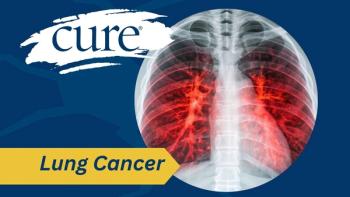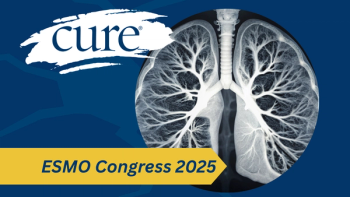
The Spectrum of Outcomes for Small Cell Lung Cancer
Transcript:
Phillippa J. Cheetham, M.D.: Now talking about the outcomes for lung cancer, obviously it’s a huge spectrum. We’re talking about small cells today and you’ve touched already on different types of lung cancer, and of course, not just the type, the cell type, the grade of the cancer. Do you see different grades within the types? If you have small cell is it always aggressive, or can you have small cell aggressive and small cell less aggressive?
Edward Kim, M.D., FACP: We’ve observed this in other tumor types. Less so in lung cancer. We have some adenocarcinoma variants which are in the non-small cell category that seem to be more indolent. They usually start off as sort of precancerous. Hyperplasia is the technical term we would use, and we would see on a CT [computed tomography] scan, it looks like a little cloud in there, not a solid nodule. But we know those are at high risk to transform, but the time period can be quite long.
With small cell it’s very rare that we would see anything like that. I can recall one case in my lifetime where a woman in Louisiana had a nodule being followed for two years by a local doctor. She came to see me. I said, well it’s growing, we need to biopsy it, and it turned out to be small cell, which I’ve never seen a case like that.
Phillippa J. Cheetham, M.D.: Unusual, sure.
Edward Kim, M.D., FACP: Yes. Generally, the small cell lung cancers are more aggressive, they grow to bigger sizes, they like to occupy space in the chest and the lymph nodes.
Phillippa J. Cheetham, M.D.: Now we’ve talked about how potentially aggressive small cell cancer can be. What percentage of patients that you see actually present with disease that’s confined to the chest versus disease that’s already found its way out of the lungs elsewhere in the body?
Edward Kim, M.D., FACP: The general numbers will be about a third to 40 percent will be what we call limited stage. And that means confined to a radiation field within the chest. The rest of the folks will present with something outside of that, and sometimes that is outside of the chest, sometimes it’s in two numerous areas within the chest, and those are who we classify as extensive stage. And that is essentially stage 4.
Phillippa J. Cheetham, M.D.: So if a patient turns out that they have purely either no symptoms at all or symptoms just located to lung symptoms, do you routinely screen the whole body, top to bottom, before embarking on a treatment protocol just to accurately stage the patient? Or is that driven by potential symptoms or signs elsewhere in the body?
Edward Kim, M.D., FACP: When I was in training, we were taught to use symptoms. And I was never ascribed to that. I felt like at baseline, when you’re doing an initial assessment, you really need to stage someone from head to toe. And that includes imaging the brain, imaging all the bones, and get that accurate staging up front. That doesn’t mean every subsequent time you have to do a full body assessment, but at the very beginning, yes. I am a big believer in making sure we have accurate staging.
Phillippa J. Cheetham, M.D.: And when you have that patient in front of you, newly diagnosed probably with a CT scan or at very least a chest X-ray that looks concerning, are there any other red flags in the blood work or in sputum samples that can help home in either on the diagnosis of lung cancer or a specific cell type where you can say, yes, this patient’s definitely got this type of cancer? Any markers in the blood or sputum that you look at?
Edward Kim, M.D., FACP: We’re not as sophisticated in some ways like some of the other tumor types. Sputum hasn’t really helped us very much. You can occasionally get some cancer cells showing up. We like to get tissue. And the good news is, is that in lung cancer diagnosis, we now know we want more tissue. More tissue will help us make a diagnosis better, it will also, if relevant, help us test for some additional markers in the blood; it’s very nonspecific. Sometimes in patients who have squamous histology or small cell histology we’ll see calcium [levels] elevated, alk [alkaline] phosphatase elevated, but nothing too specific.
Phillippa J. Cheetham, M.D.: In terms of diagnosing and treating, biopsy is the first stage in getting the ball rolling to get patients treated?
Edward Kim, M.D., FACP: Yes, we don’t want a cytology, we don’t want a brushing. It still frustrates me to no end when a pulmonologist will go in and sort of use that brush to just scrape the edge of the tumor and then say, “That’s all we need.” That is not enough. We want an actual piece of tissue, a biopsy, to make a diagnosis and move forward.
Transcript Edited for Clarity





